A guide to TRM best practices for travel managers
Risk-related policies: Fortifying the governance framework of travel risk management.
By: Ray Rackham
March 24, 2024
This is the final in a series of five articles on Travel Risk Management (TRM) best practices. TRM in a post-COVID world has never been more crucial. As companies navigate the complexities of business travel in an era marked by uncertainties and evolving risks, understanding and implementing TRM best practices is essential. This blog series, based on a comprehensive study conducted with travel managers worldwide, sheds light on the most critical aspects of TRM. Our methodology involved analyzing survey data, industry standards like ISO 31030:2021, and insights from the Global Business Travel Association (GBTA), ensuring a robust and practical approach to understanding TRM in today’s workplace. Download the full report here.
The implementation of comprehensive, well-structured risk-related policies forms the governance backbone of any robust Travel Risk Management (TRM) program. This blog post explores the pivotal role of these policies in securing the safety of travelers and the organization, aligning closely with the perspectives shared in the 'TRM in a Post-COVID World' study.
Drawing from our in-depth study, we highlight the importance of well-crafted risk-related policies in creating a structured, secure, and compliance-driven environment for business travel.
Best practices in risk-related policies
The study identified three areas in which travel and mobility managers should focus to ensure world-class risk-related policy as part of a robust TRM strategy.
1. Data privacy rules
As adhered to by 87% of organizations, stringent data privacy rules are vital in safeguarding sensitive information within the increasingly digital travel sphere.
2. Restrictive travel policies
Implementing rules that restrict specific travel behaviors, such as the simultaneous travel of key executives, enhances the organization's resilience and readiness to respond to potential crises, a practice adopted by 71% of firms.
3. Blacklist policies
Maintaining blacklists for high-risk destinations or airlines, as implemented by 69% and 53% of organizations respectively, epitomizes a forward-thinking approach to mitigating exposure to travel-related risks.
Risk-related policies are not just procedural; they are the bedrock of a sound TRM strategy. They provide a systematic approach to managing travel risks, ensuring that every journey aligns with the organization's broader risk management framework and governance standards, mirroring the comprehensive insights derived from the 'TRM in a Post-COVID World' study.
Travel well-informed with CIBTvisas
An experienced visa specialist can help you navigate the complexities of border crossing requirements. Contact CIBTvisas for a quote today.
CIBTvisas Monthly Update
Get the CIBTvisas Monthly Update for the most recent information on travel requirements and consular closings.
